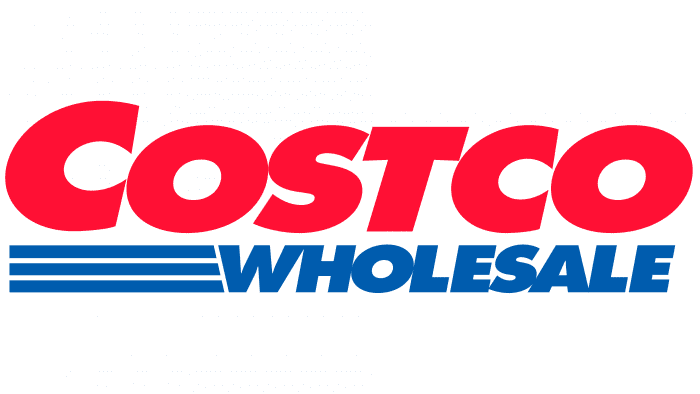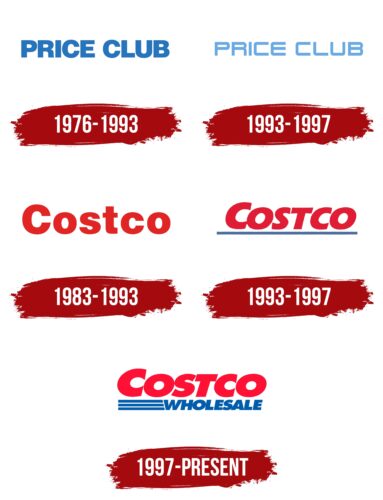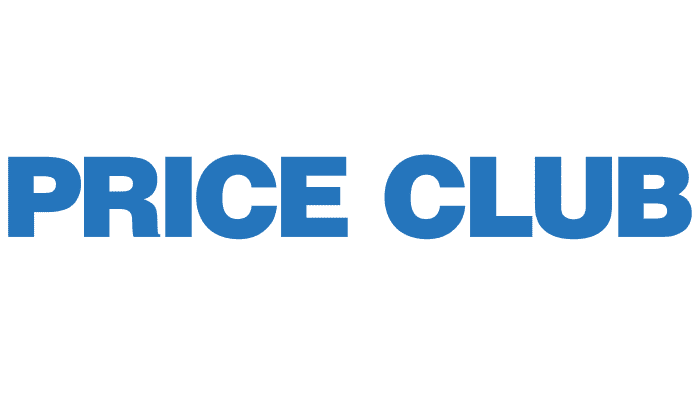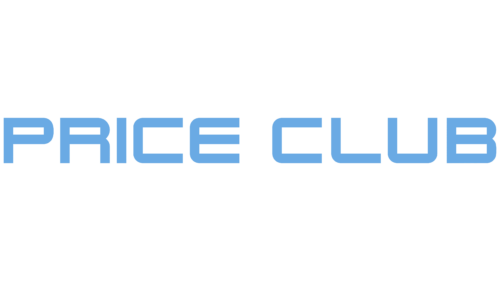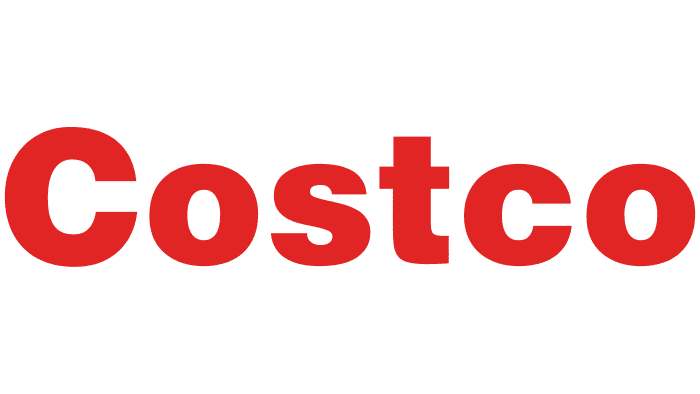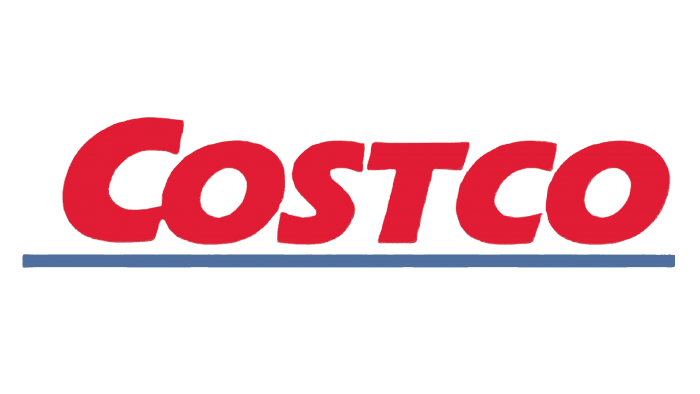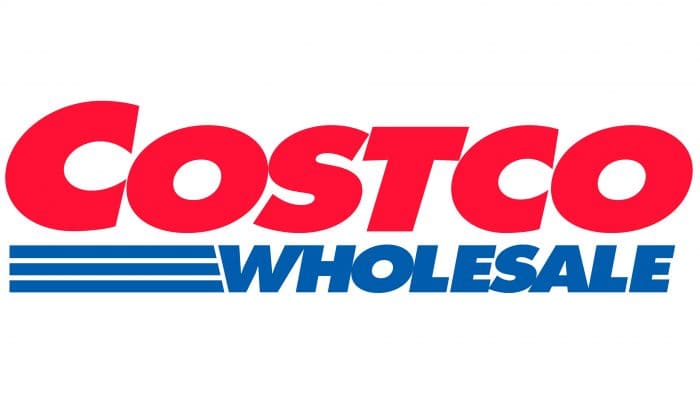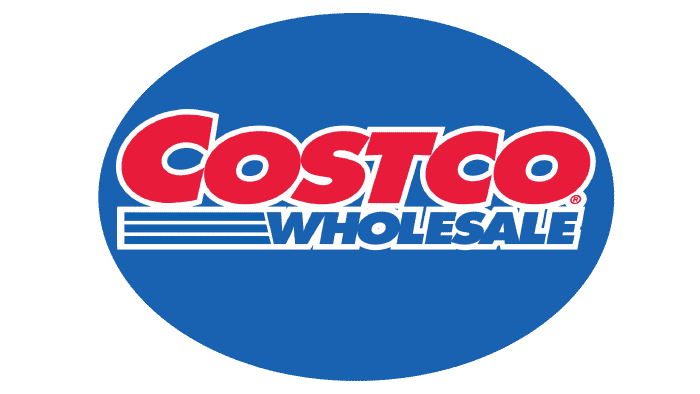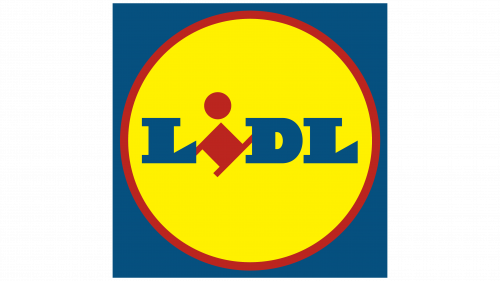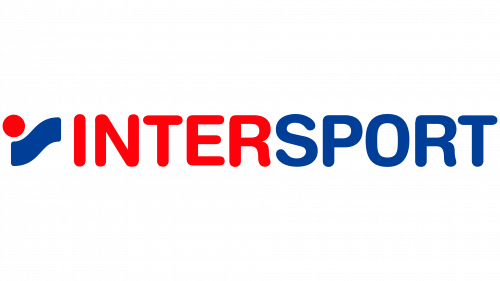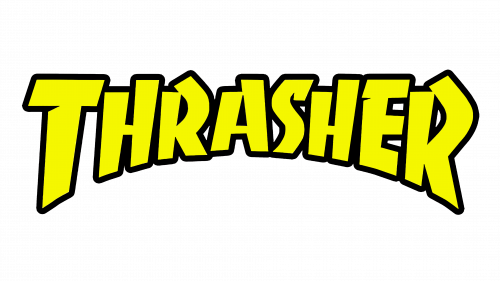The Costco logo promises a huge selection of goods in the company’s halls and the ability to buy them in large quantities. At the same time, the emblem makes an allowance for the need for permanent membership in the club, which gives the right to enjoy the privileges of the network.
Costco: Brand overview
| Founded: | September 15, 1983 |
| Founder: | James Sinegal, Jeffrey Brotman |
| Headquarters: | Issaquah, Washington, U.S. |
| Website: | costco.com |
Meaning and History
The iconic red and blue Costco Wholesale Corporation logo took on its current look at the turn of the millennium. Before that, it had been refined several times, although the general concept remained the same: horizontal inscription with minimal decor.
What is Costco?
Costco is an American chain of stores that serve only registered members and offers them advantageous discounts. Its full name is Costco Wholesale Corporation. It sells various products, including cosmetics, furniture, household appliances, clothing, and food. It is one of the largest retailers in the world, with numerous outlets in the USA, Australia, South Korea, Japan, Mexico, Canada, and other countries.
1976 – 1993
The modern Costco is the successor to the Price Club warehouse chain that began in 1976. Its predecessor had a simple emblem: the black word PRICE CLUB on a white background.
1993 – 1997
In 1993, the American warehouse chain Price Club got a new logo, which was used for several years after the merger with Costco (the two brands continued to exist separately as part of the same company). It was a wordmark containing the name of a retail outlet. The lettering, in block type and painted in pale blue, looked like a neon sign. First, This impression was created due to the shape of glyphs with rectangular intra-letter gaps. A similar typeface is Yoyo’s NiseJSRF Regular. The phrase was completely converted to uppercase and looked balanced.
1983 – 1993
The Costco company appeared in 1983. Its name was presented on the trademark. The designers used dark red to accentuate attention.
1993 – 1997
After merging with Price Club, the chain of stores worked separately for some time. The rebranding affected the logo: the font became italic, the lettering became light red, and a horizontal blue stripe appeared at the bottom.
1997 – today
In 1997, PriceCostco became Costco Wholesale Corporation and introduced a new logo. The designers retained the iconic brand image, leaving red lettering and adding the blue word “WHOLESALE” with three short horizontal lines.
Costco: Interesting Facts
Costco Wholesale Corporation stands out in the warehouse club world thanks to its approach of selling in bulk and requiring a membership to shop.
- Start and Expansion: Founded in 1983 by James Sinegal and Jeffrey Brotman in Seattle, Washington, Costco has grown into the world’s second-largest retailer and the biggest membership warehouse club in the U.S.
- Membership-Only: Costco’s model requires shoppers to have a membership. This strategy has helped build a loyal customer base and keep prices low because of high sales volume and quick inventory turnover.
- Kirkland Signature Brand: Since its launch in 1995, Costco’s Kirkland Signature brand has become known for quality and value, even outperforming some national brands.
- Affordable Hot Dog and Soda: The famous $1.50 hot dog and soda combo, unchanged in price since 1985, shows Costco’s dedication to giving members great deals.
- Gas Sales: Costco sells gas at many locations, often at lower prices than competitors, attracting non-members and boosting membership sign-ups.
- Worldwide Growth: Costco isn’t just in the U.S.; it has warehouses in countries like Canada, Mexico, the UK, Japan, South Korea, and Australia, helping it grow even more.
- Select Product Range: Costco stocks around 4,000 types of items, focusing on products that can be sold in high volume, simplifying shopping and lowering costs.
- Good Pay and Benefits: Costco is known for paying its employees well and offering good benefits. It enjoys low staff turnover and high job satisfaction rates.
- Eco-Friendly Practices: Committed to being green, Costco uses solar power at some warehouses and focuses on sustainable seafood, among other eco-friendly initiatives.
- Seasonal Surprises: Costco’s “treasure hunt” shopping experience allows members to find unique and high-value items that often change, drawing them back to see what’s new, especially during the holiday season.
Costco’s blend of unique business practices, commitment to low prices, and focus on satisfying customers and employees explain why it’s a favorite shopping spot for millions around the globe.
Font and Colors
Costco has a concept trademark: it contains the name of the chain of stores and the corporate colors with which it is associated. Three parallel stripes make the text dynamic.
The logo creators used the commercial Futura Extra Bold Oblique font. They lengthened the letters and positioned them at a slight angle, tilted to the right. Another highlight of Costco is its eye-catching palette, which includes just two colors: red (# E31837) and blue (# 005DAA).
logo costco wholesale
